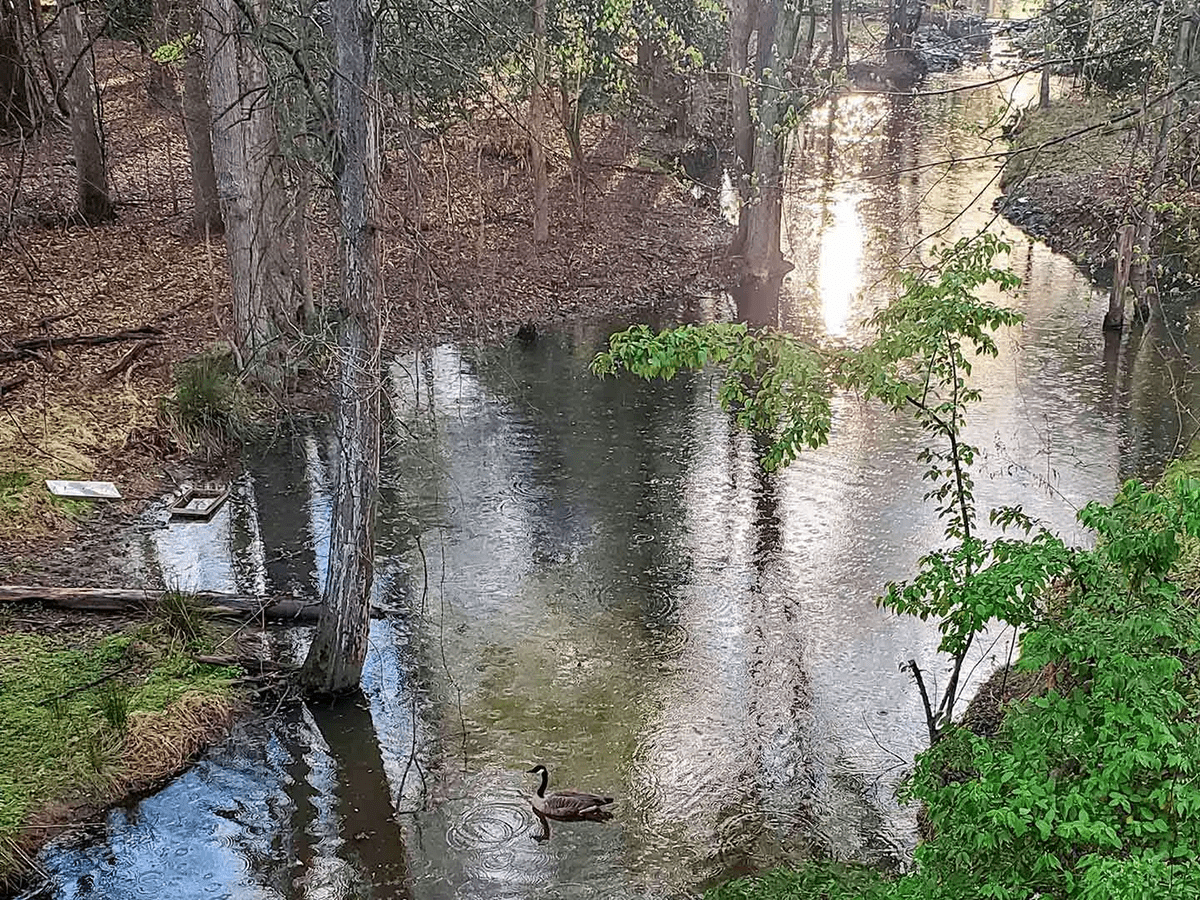
The Chesapeake and Atlantic Coastal Bays Trust Fund has awarded $1,752,134 to the University of Maryland to complete the restoration of Campus Creek and renewal of the Animal Sciences Pond. Congratulations go to FM’s Christopher Ho, a Civil Engineer with Planning & Construction, who filed two rounds of applications before the grant was secured. In 2019, Phase I of the creek restoration, restored 3,000 feet of the stream. With this grant, FM will finish the job.
Project Managers from FM will include Chris Tenneson on the Campus Creek restoration and Chrysanthe Broikos on the Animal Sciences pond. Outside contractors will complete much of the work, and FM’s Michael Cunningham will oversee maintenance of both creek and pond when the work is complete. Contractors will be selected over the winter months and the projects will begin in Spring 2024.
Campus Creek has long suffered from environmental degradation, including erosion, collapsing banks, fallen trees, and phosphorus, nitrogen and other harmful runoff from the golf course. The Animal Sciences pond suffers similar runoff of excess nutrients from Terp Farm.
The restoration will improve the aesthetics of the stream here on campus, and slow the pace of the current, reducing flood risk and allowing excess nutrients to filter through the stream bed. This in turn provides benefits downstream in Paint Branch, the Anacostia River and, ultimately, results in reduced algae blooms and a healthier Chesapeake Bay.
As a living laboratory for UMD students and professors, prov Campus Creek has long provided opportunities for study and research. Now, because stream restoration is a relatively new process, this project will provide additional opportunities to gather new data that will guide future projects around the country.
This project is one of 24 ecological restoration projects encompassing 95 sites throughout the state. The projects were selected to improve water quality and habitat in the Chesapeake Bay watershed while building local resilience to climate impacts.
